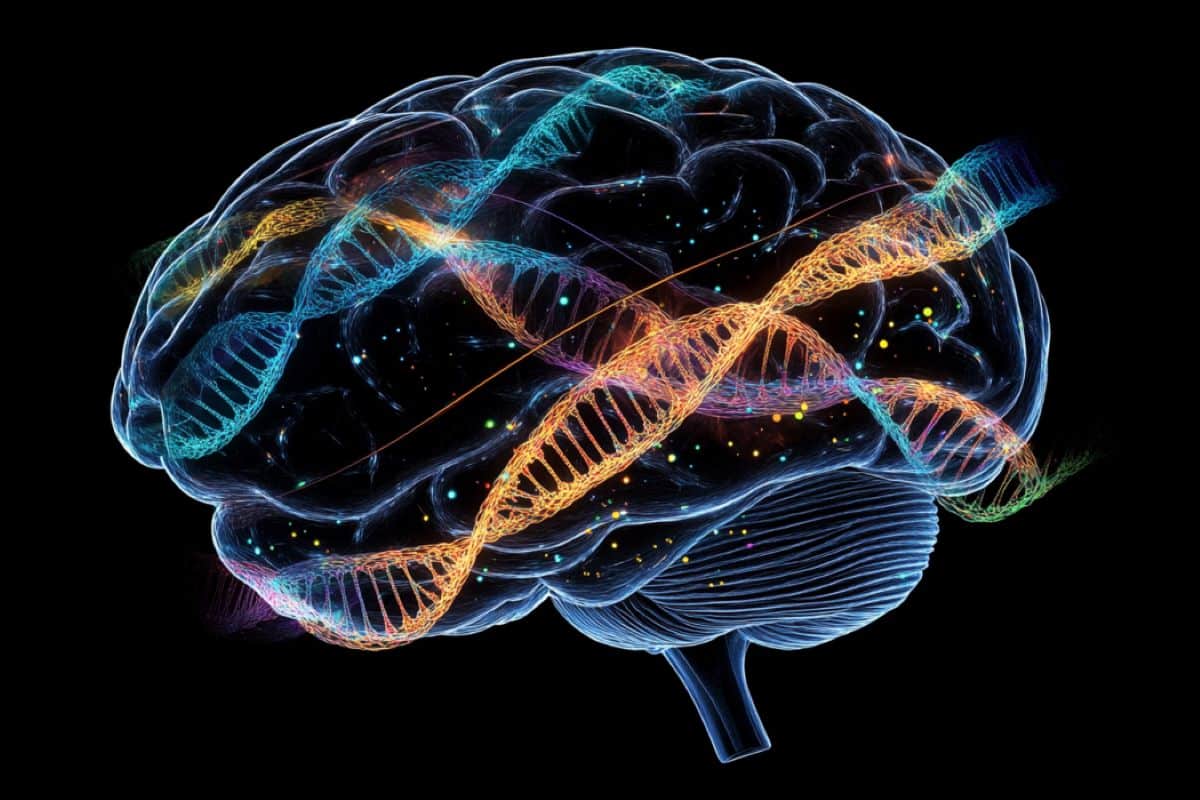Summary: A large-scale study identified 254 genetic variants that shape the volume of key brain regions responsible for memory, motor control, and behavior. Researchers analyzed DNA and brain scans from nearly 75,000 people, uncovering links between these variants and conditions like ADHD and Parkinson’s disease.
The findings offer valuable insights into how genetics influence brain structure and may lead to more effective interventions for brain disorders. This research marks a significant step toward understanding the genetic basis of brain function and dysfunction.
Key Facts:
- 254 genetic variants were linked to brain volume in critical subcortical regions.
- Findings connect brain volume differences to conditions like ADHD and Parkinson’s.
- Study provides a roadmap for understanding how genetics shape brain disorders.
Source: USC
In one of the largest-ever studies of DNA and brain volume, researchers have identified 254 genetic variants that shape key structures in the “deep brain,” including those that control memory, motor skills, addictive behaviors and more.
The findings were just published in the journal Nature Genetics.
The study is powered by the Enhancing Neuro Imaging Genetics through Meta-Analysis (ENIGMA) consortium, an international effort based at the Keck School of Medicine of USC, which unites more than 1,000 research labs across 45 countries to hunt for genetic variations that affect the brain’s structure and function.

“A lot of brain diseases are known to be partially genetic, but from a scientific point of view, we want to find the specific changes in the genetic code that cause these,” said Paul M. Thompson, PhD, associate director of the USC Mark and Mary Stevens Neuroimaging and Informatics Institute and principal investigator for ENIGMA.
“By conducting this research all over the world, we’re beginning to home in on what has been called ‘the genetic essence of humanity,’” he said.
Identifying brain regions that are larger or smaller in some groups (for example, people with a specific brain disease) compared to others can help scientists start to understand what causes dysfunction in the brain.
Finding the genes that control the development of those brain regions offers a further clue about how to intervene.
In the present study, funded in part by the National Institutes of Health, a team of 189 researchers from around the world collected DNA samples and magnetic resonance imaging brain scans, which measured volume in key subcortical regions — also known as the “deep brain” — from 74,898 participants.
They then performed genome-wide association studies, or GWAS, an approach that can identify genetic variations linked to various traits or diseases, finding some gene-brain volume associations that carried a higher risk for Parkinson’s disease and attention-deficit/hyperactivity disorder (ADHD).
“There is strong evidence that ADHD and Parkinson’s have a biological basis, and this research is a necessary step to understanding and eventually treating these conditions more effectively,” said Miguel Rentería, PhD, an associate professor of computational neurogenomics at the Queensland Institute of Medical Research (QIMR Berghofer) in Australia and principal investigator of the Nature Genetics study.
“Our findings suggest that genetic influences that underpin individual differences in brain structure may be fundamental to understanding the underlying causes of brain-related disorders,” he said.
Studying the deep brain
The researchers analyzed brain volume in key subcortical structures, including the brainstem, hippocampus, amygdala, thalamus, nucleus accumbens, putamen, caudate nucleus, globus pallidus and ventral diencephalon.
These regions are critical for forming memories, regulating emotions, controlling movement, processing sensory data from the outside world, and responding to reward and punishment.
GWAS revealed 254 genetic variants associated with brain volume across those regions, explaining up to 10% of the observed differences in brain volume across participants in the study.
While previous research has clearly linked certain regions with disease, such as the basal ganglia with Parkinson’s disease, the new study reveals which gene variants shape brain volume with greater precision.
“This paper, for the first time, pinpoints exactly where these genes act in the brain,” providing the beginnings of a roadmap for where to intervene said Thompson, who is also a professor of ophthalmology, pediatrics, neurology, psychiatry and the behavioral sciences, radiology, biomedical engineering and electrical engineering at the Keck School of Medicine.
The researchers note that the study is correlational, so more investigation is needed before genes can be causally linked with various diseases.
From Rentería’s group, doctoral candidate Luis García-Marín and postdoctoral researcher Adrian Campos, PhD, were the study’s first authors. In addition to data from ENIGMA, the researchers also used data from Cohorts for Heart and Aging Research in Genomic Epidemiology (CHARGE), the UK Biobank and the Adolescent Brain Cognitive Development (ABCD) study. Summary statistics are available for researchers to download from the ENIGMA consortium.
About this research
In addition to Thompson and Rentería, the study’s other USC authors include Neda Jahanshad and Sophia I. Thomopoulos from the USC Mark and Mary Stevens Neuroimaging and Informatics Institute, Keck School of Medicine of USC. A full list of authors and their affiliations can be found in the online publication.
Funding: This work was supported by federal and private agencies across the world, including the National Institutes of Health, under grants R01AG058854, U01AG068057, R01NS107513 and R01MH116147. A full list of funders can be found in the online publication.
About this genetics and neurology research news
Author: Laura LeBlanc
Source: USC
Contact: Laura LeBlanc – USC
Image: The image is credited to Neuroscience News
Original Research: Closed access.
“Genomic analysis of intracranial and subcortical brain volumes in up to 74,898 individuals yields polygenic scores accounting for brain variation across ancestries” by Paul M. Thompson et al. Nature Genetics
Abstract
Genomic analysis of intracranial and subcortical brain volumes in up to 74,898 individuals yields polygenic scores accounting for brain variation across ancestries
Subcortical brain structures are involved in developmental, psychiatric and neurological disorders.
Here we performed genome-wide association studies meta-analyses of intracranial and nine subcortical brain volumes (brainstem, caudate nucleus, putamen, hippocampus, globus pallidus, thalamus, nucleus accumbens, amygdala and the ventral diencephalon) in 74,898 participants of European ancestry.
We identified 254 independent loci associated with these brain volumes, explaining up to 35% of phenotypic variance. We observed gene expression in specific neural cell types across differentiation time points, including genes involved in intracellular signaling and brain aging-related processes.
Polygenic scores for brain volumes showed predictive ability when applied to individuals of diverse ancestries. We observed causal genetic effects of brain volumes with Parkinson’s disease and attention-deficit/hyperactivity disorder.
Findings implicate specific gene expression patterns in brain development and genetic variants in comorbid neuropsychiatric disorders, which could point to a brain substrate and region of action for risk genes implicated in brain diseases.






